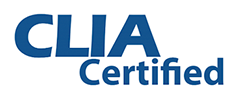输卵管疾病
输卵管疾病是不孕症的常见原因,占所有不孕症病例的15-20%。输卵管负责接收卵子,并通过蠕动运动将受精后的胚胎输送到子宫。如果输卵管阻塞,精子和卵子无法相遇,从而导致不孕。输卵管疾病的最佳治疗选择是体外受精(IVF)。
输卵管疾病的最常见原因包括先前的盆腔感染(如衣原体或淋病)、盆腔炎性疾病(PID)、盆腔粘连(疤痕组织)、先前的盆腔手术和子宫内膜异位症。其他不常见的原因包括盆腔结核、先前的剖宫产和肠道手术。
诊断输卵管疾病的常用方法是输卵管造影(HSG),通常称为染料测试。这项测试可以在服用避孕药期间的任何时间进行,或在月经结束后和排卵前进行。通过阴道注入染料,通过子宫颈进行,并拍摄X光片以评估子宫内的情况(子宫腔)以及输卵管的状况。
输卵管可以在与子宫连接的部位(峡部)被阻塞,这称为近端阻塞。这通常是由于子宫内膜异位症、盆腔粘连或先前的盆腔炎性疾病引起的。治疗方法是宫腔镜输卵管插管术,据报道,在35岁以下的女性中,该方法的成功率为40-50%。对于年龄超过35岁的女性或存在其他因素的情况下,成功率较低。
中输卵管阻塞较为罕见,可能是由于输卵管结扎、先前严重的盆腔感染、盆腔结核或子宫内膜异位症引起的。如果输卵管阻塞、肿胀并扩张,不建议进行输卵管修复,应切除患病/阻塞的输卵管(输卵管切除术)。
当输卵管末端阻塞(远端阻塞)时,这种病理被称为输卵管积水。这通常是由于先前的盆腔感染或盆腔粘连引起的。盆腔粘连可以通过腹腔镜手术治疗,并且可以打开输卵管。如果问题是外在的,例如盆腔粘连,成功率较高。如果输卵管由于先前的盆腔感染从内部受损(内在性),修复这些输卵管的成功率不高。可以进行输卵管成形术以打开输卵管,但在大多数情况下,输卵管可能再次阻塞,需要进行额外的手术以将其移除。此外,即使成功怀孕,发生输卵管妊娠(异位妊娠)的风险也很高。
目前推荐的输卵管积水治疗方法是切除病变组织,然后进行体外受精(IVF)。在进行IVF之前建议进行切除,因为阻塞的输卵管可能含有有毒液体,这些液体可能在胚胎植入时回流到子宫腔内。根据大量医学研究,输卵管阻塞的患者在进行IVF时怀孕率显著降低,流产风险显著增加。









